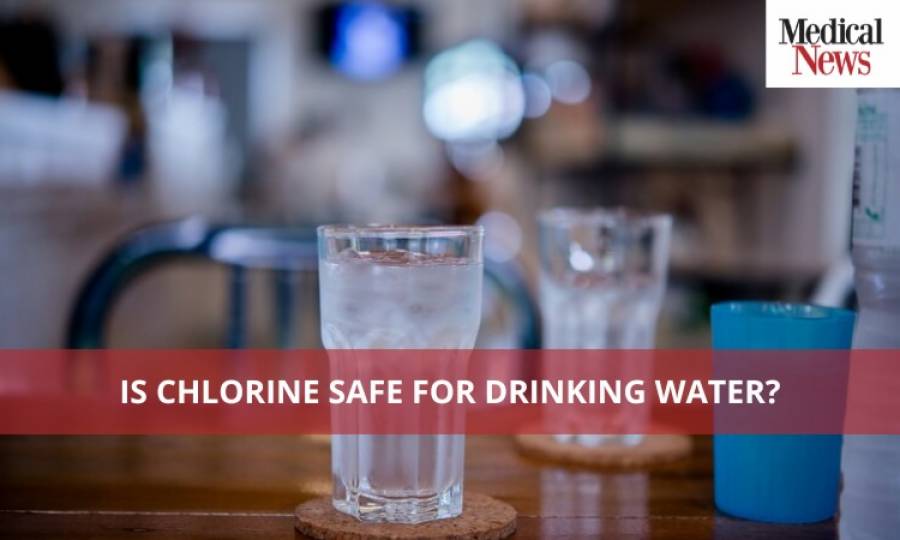Is chlorine safe for drinking water?

Chlorine purifies drinking water. It is considered an alternative to boiling water. Chlorine was added to water when waterborne diseases such as dysentery, cholera, and typhoid rose. When research found that chlorine has a bactericidal effect, the government started adding chlorine to tap water, and then private companies followed suit. It kills parasites, viruses, and bacteria by attacking their cell membrane structure. Chlorine suspends cell respiration and DNA activity required for the survival of bacteria. Chlorination occurs during the first and final step of the water treatment process. Levels of chlorine are different depending upon the water supply. There is still conflicting evidence regarding its safety in drinking water, but one thing for sure is that it can only be consumed at safe levels.
Is it safe? What are the side effects?
Chlorine levels up to four milligrams per liter (mg/L or 4 parts per million (ppm) are considered safe in drinking water. What’s important to note is that chlorine leaves a distinct smell and taste, discouraging people from consuming water. If people know the chlorine levels in drinking water and those levels are within the recommended limit, chlorine is safe to use. But dangerous levels can cause a multitude of problems. It contains toxins, such as trihalomethanes (THMs), produced when chlorine is mixed with organic compounds found in water which can lead to asthma, bladder cancer, and heart disease. This discovery led to research, and it was found that chlorinated water drinkers suffered from conditions like cancers, reproductive problems, immune system problems, and heart attacks.
Research published in Environmental Health Perspectives showed that chlorine by-products are associated with increased bladder and rectal cancer risk. A survey published in Annals of Allergy, Asthma and Immunology stated that chlorophenols, by-products of water chlorination, might be responsible for the heightened food allergies in the western world. A study in Taiwan conducted on nearly 400,000 infants found that pregnant women who drank chlorinated water had increased risks of having children with congenital disabilities such as the cleft palate and heart problems.
Apart from this, the bactericidal effect of chlorine also kills the good bacteria in the gut, leaving the immune system weak. Poor gut health can lead to a number of problems like irritable bowel syndrome, obesity, diabetes, asthma, abdominal pain, diarrhea, and colorectal cancer.
How to filter out chlorine?
One of the best ways to remove chlorine is to use carbon. Using a water refiner system in combination with carbon can help ensure that the water you are drinking is devoid of dangerous chlorine levels and is safe to drink. Alternatively, you can fill a glass water bottle with tap water and let it sit in the refrigerator for 24 hours. This will make the chlorine evaporate during that time. Or you can also boil the water to remove chlorine. The latter methods are time-consuming and inconvenient; hence people invest in a sound quality water filtration system to have safe drinking water for the whole house.
Advertisement
Trending
Popular
Aging: New study identifies key lifestyle, environmental factors ...
-
Hair loss: Discovery uncovers key stem ...
08:00 PM, 25 Feb, 2025 -
Broccoli sprout compound may help lower ...
11:31 AM, 25 Feb, 2025 -
Gas Pain vs. Heart Attack: How to tell ...
09:00 PM, 22 Feb, 2025 -
Coconut oil supplement shows promise ...
08:00 PM, 20 Feb, 2025



